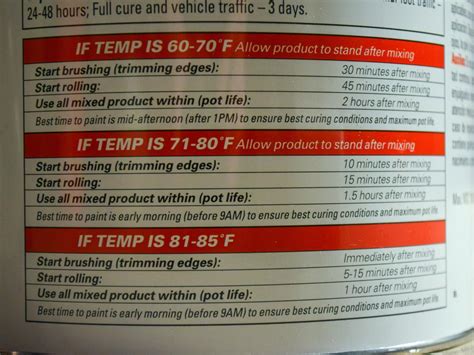Your Guide to the Perfect Epoxy Cure Time
Epoxy resin is a versatile material used in countless applications, from crafting stunning jewelry to constructing durable industrial components. Understanding epoxy cure time is crucial for achieving optimal results. This comprehensive guide will delve into the factors influencing cure time, provide tips for achieving the perfect cure, and address common questions surrounding this critical aspect of epoxy work.
What Influences Epoxy Cure Time?
Several factors significantly impact how long your epoxy resin takes to cure completely. Understanding these elements is key to managing expectations and achieving a successful project.
-
Type of Epoxy: Different epoxy resins have different cure times. Some are designed for fast curing, ideal for quick projects, while others are formulated for slower, more controlled curing, offering better clarity or strength. Always consult the manufacturer's instructions for the specific epoxy you're using. This is paramount!
-
Ratio of Resin to Hardener: Precisely mixing the resin and hardener according to the manufacturer's instructions is paramount. Even slight deviations can dramatically affect the cure time and the final properties of the epoxy. Using a digital scale for precise measurements is highly recommended.
-
Temperature: Temperature plays a crucial role. Higher temperatures generally accelerate the curing process, while lower temperatures slow it down. Ideal curing temperatures are usually specified by the manufacturer, and working within this range ensures consistent results. Extreme temperatures should be avoided.
-
Humidity: High humidity can slow down the curing process and potentially compromise the final product's strength and clarity. Working in a dry environment is often preferable for optimal curing.
-
Pot Life: This refers to the time the mixed epoxy remains workable. Once mixed, the epoxy begins to cure, and its viscosity increases. Understanding the pot life allows you to plan your work accordingly, preventing premature curing in the container.
How Long Does Epoxy Resin Take to Cure?
There's no single answer to this question. The cure time varies widely depending on the factors mentioned above. However, you can generally expect:
-
Initial Cure (Tack-Free): This is the time it takes for the epoxy to become touch-dry, typically ranging from a few hours to a day.
-
Full Cure: This is when the epoxy reaches its maximum strength and hardness, often taking several days to a few weeks, depending on the specific epoxy and environmental conditions. Manufacturers often provide guidelines for full cure time on the product packaging.
Troubleshooting Epoxy Cure Issues
If your epoxy isn't curing as expected, consider these possibilities:
-
Incorrect Mixing Ratio: Double-check the resin-to-hardener ratio. Even a slight inaccuracy can significantly impact cure time and final properties.
-
Temperature Extremes: Ensure the temperature is within the manufacturer's recommended range. Avoid extreme heat or cold.
-
High Humidity: If working in a humid environment, consider using a dehumidifier or working in a climate-controlled space.
-
Contamination: Make sure your mixing containers and tools are clean and free from contaminants that could interfere with the curing process.
What Happens if Epoxy Doesn't Cure Properly?
Improperly cured epoxy will likely be weaker, more brittle, and more susceptible to cracking or damage. It may also exhibit a sticky or tacky surface. In severe cases, it may remain uncured indefinitely.
Tips for Achieving the Perfect Epoxy Cure
-
Accurate Measurements: Use a digital scale to ensure precise resin-to-hardener ratios.
-
Controlled Environment: Maintain a consistent temperature and humidity during the curing process.
-
Cleanliness: Use clean containers and tools to prevent contamination.
-
Patience: Allow ample time for the epoxy to fully cure before handling or using the finished product. Don't rush the process.
How to Speed Up or Slow Down Epoxy Cure Time? (Safely!)
While you can't drastically alter the inherent cure time of a specific epoxy resin without compromising its properties, you can slightly influence the speed within the manufacturer's recommended temperature parameters. Increasing temperature slightly (within safe limits) might speed up curing, while lowering it will slow it down. Always refer to the product instructions before attempting temperature adjustments.
Frequently Asked Questions (FAQs)
How long does it take for epoxy to harden enough to demold?
The demolding time depends on the specific epoxy and the size/thickness of the piece. Check the manufacturer’s instructions, but generally, it’s after the initial cure (tack-free stage).
Can I speed up the epoxy curing process significantly?
While you can slightly influence the speed within safe temperature limits, drastically altering the cure time is not recommended and might compromise the epoxy's strength and integrity.
What should I do if my epoxy is still sticky after the recommended cure time?
This often indicates an issue with the mixing ratio, temperature, or humidity. Refer to the troubleshooting section for guidance.
This guide provides a comprehensive overview of epoxy cure time. Remember, always consult the manufacturer's instructions for your specific epoxy resin for the most accurate information and best results. Careful attention to detail during the mixing and curing process will ensure a successful project with a perfect cure every time.

